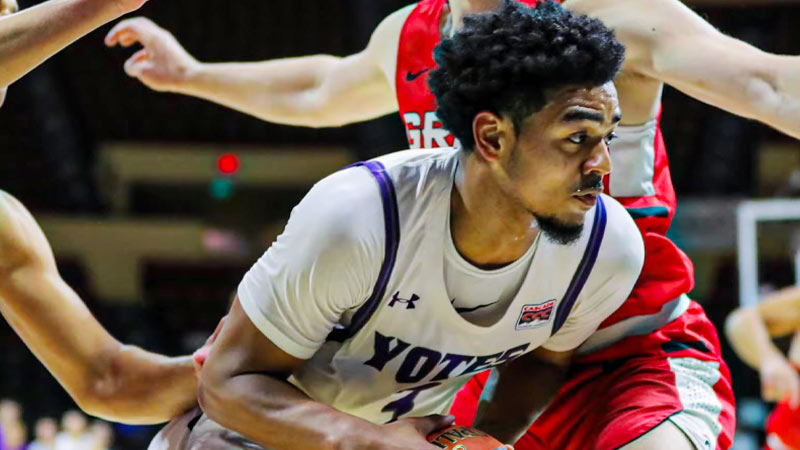When it comes to college basketball in the United States, the NCAA’s March Madness tournament often takes center stage, capturing the nation’s attention with its thrilling matchups and Cinderella stories.
However, beyond the spotlight of NCAA basketball lies another exciting realm of competition: NAIA basketball. The National Association of Intercollegiate Athletics (NAIA) offers a unique platform for talented student-athletes to showcase their skills, compete at a high level, and pursue their passion for basketball.
In this blog post, we delve into the world of NAIA basketball, addressing five frequently asked questions to provide you with a comprehensive understanding of this lesser-known but equally vibrant collegiate sports scene.
What Is Naia Basketball?
NAIA basketball refers to basketball competitions and programs governed by the National Association of Intercollegiate Athletics (NAIA) in the United States.
The NAIA is an organization that oversees and organizes intercollegiate athletics for smaller colleges and universities, providing them with opportunities to compete at the national level.
NAIA basketball operates alongside the more widely known NCAA (National Collegiate Athletic Association) but is specifically designed for smaller institutions.
The NAIA’s focus is on promoting student-athletes’ overall development, balancing academics and athletics.
Here are some key points about NAIA basketball:
Schools
NAIA basketball includes colleges and universities that are typically smaller in size compared to those in NCAA Division I. These institutions may not have the resources to compete at the NCAA Division I level but still offer competitive basketball programs.
Tournaments
The NAIA hosts national basketball tournaments for both men’s and women’s teams. These tournaments culminate in national championships, where the top teams from different conferences and regions compete for the title.
Conferences and Regions
NAIA basketball teams are grouped into conferences and regions, which help organize competitions and determine qualifiers for the national tournament. Conferences are often geographically based, and they can have varying numbers of member schools.
Eligibility and Scholarships
NAIA institutions offer athletic scholarships to student-athletes, similar to the NCAA. The eligibility requirements are slightly different, and the NAIA places a strong emphasis on maintaining a balance between academics and athletics.
Recognition
While NAIA basketball may not receive as much attention as NCAA Division I basketball, it still provides a platform for talented players to showcase their skills and compete at a high level.
Coaching and Talent
NAIA basketball programs have dedicated coaching staff and can attract talented players from different regions. Many NAIA players have the potential to play professionally, both domestically and internationally.
Community Focus
NAIA institutions often emphasize a sense of community and close interaction between student-athletes and coaches. This can lead to strong relationships and personal development opportunities.
NAIA basketball offers a pathway for smaller colleges and universities to participate in competitive basketball at the national level. It provides student-athletes with opportunities to excel in both their academic and athletic pursuits, while also fostering a sense of community and teamwork.
How to Get Requited in NAIA?
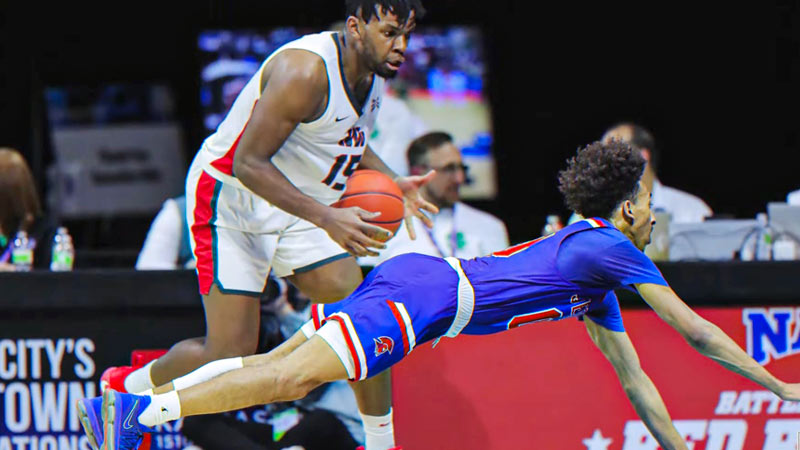
Getting recruited to play NAIA basketball involves a combination of athletic talent, academic performance, and effective communication with coaches. Here are steps you can take to increase your chances of getting recruited by NAIA basketball programs:
Assess Your Skills and Goals
Understand your strengths and areas for improvement as a basketball player. Consider what level of competition you’re seeking and what kind of college environment you want to be a part of.
Maintain Academic Excellence
NAIA schools emphasize the balance between academics and athletics. Good grades and standardized test scores can make you a more attractive recruit. Aim to meet the academic eligibility requirements set by the NAIA.
Create a Highlight Video
Put together a well-edited highlight video that showcases your skills, athleticism, and basketball IQ. This video will be one of the primary tools for coaches to evaluate your abilities.
Research Schools
Identify NAIA schools that align with your academic and athletic preferences. Look into their basketball programs, coaching staff, team culture, and facilities.
Contact Coaches
Reach out to coaches of the schools you’re interested in. Introduce yourself, provide your highlight video, and express your interest in their program. Personalized messages show that you’ve done your research.
Attend Showcases and Camps
NAIA basketball showcases, camps, and tournaments can provide exposure to college coaches. These events allow coaches to see you play in person and assess your skills against other recruits.
Stay Active on Social Media
Coaches often use social media to learn about recruits. Keep your profiles updated with your basketball achievements, training progress, and academic successes.
Attend College Visits
If possible, visit the campuses of the schools you’re interested in. Meeting coaches, touring facilities, and interacting with current players can help you gauge whether a program is the right fit for you.
Stay Persistent and Patient
The recruitment process can take time. Be prepared for rejections or delays and continue working on your skills and academics while maintaining a positive attitude.
Stay in Touch
Regularly communicate with coaches to update them on your progress, achievements, and any changes in your plans. Building a relationship can make a difference in the recruitment process.
Seek Advice
Talk to your high school coach, club coach, or other mentors who can provide guidance on the recruitment process. They may have connections with NAIA coaches or insights into the best strategies.
Remember that the NAIA has its own rules and regulations for recruitment and eligibility. Stay informed about these rules to ensure you’re following the correct procedures.
Being proactive, showcasing your skills, and building relationships with coaches can significantly increase your chances of getting recruited to play NAIA basketball.
Top NAIA Basketball Schools
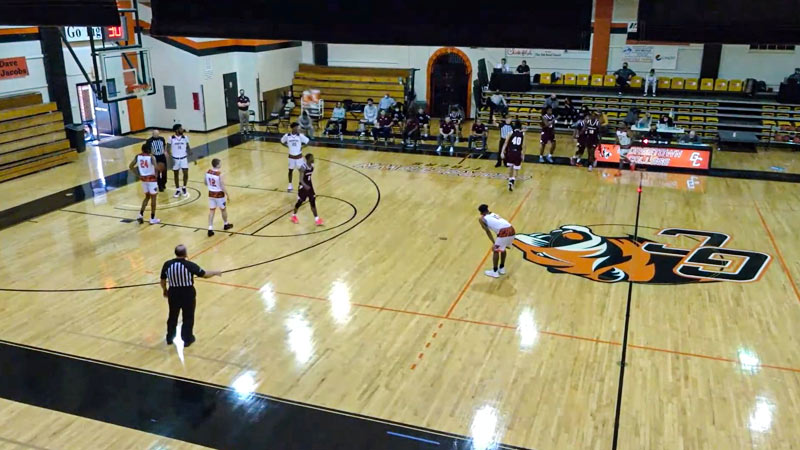
The National Association of Intercollegiate Athletics (NAIA) features many competitive basketball programs across various schools. While the rankings and top programs can change from year to year, here are some of the historically strong NAIA basketball schools:
Georgetown College (Kentucky)
Georgetown College is known for its successful basketball program, having won multiple national championships and consistently maintaining a strong presence in NAIA basketball.
William Carey University (Mississippi)
William Carey’s men’s basketball team has been a consistent contender in NAIA basketball, making numerous tournament appearances and achieving high rankings.
Oklahoma City University
The Stars of Oklahoma City University have a rich basketball history, with multiple national championships and consistent appearances in the NAIA national tournament.
Lewis-Clark State College (Idaho)
Lewis-Clark State College has a strong basketball tradition, and its men’s and women’s teams have both been successful on the national stage.
Indiana Wesleyan University
Indiana Wesleyan’s basketball program has gained prominence in recent years, winning national championships and being a regular participant in the NAIA national tournament.
Loyola University New Orleans
Loyola has a competitive basketball program that has achieved success in the NAIA, with both its men’s and women’s teams performing well.
Columbia College (Missouri)
Columbia College has had a strong basketball presence in the NAIA, consistently competing at a high level and making appearances in the national tournament.
Westmont College (California)
Westmont College has a history of success in NAIA basketball, with its teams often being ranked highly and participating in the national tournament.
Cumberlands (Kentucky)The
University of the Cumberlands has a competitive basketball program, with its teams regularly competing in the NAIA national tournament.
Martin Methodist College (Tennessee)
Martin Methodist College has a history of competitive basketball and has produced strong teams that have made their mark in the NAIA.
Please note that the competitiveness of NAIA basketball programs can vary from year to year, and new programs can rise while others might experience changes in performance.
It’s a good idea to check recent rankings and standings to get the most up-to-date information on top NAIA basketball schools.
NAIA Basketball Rankings
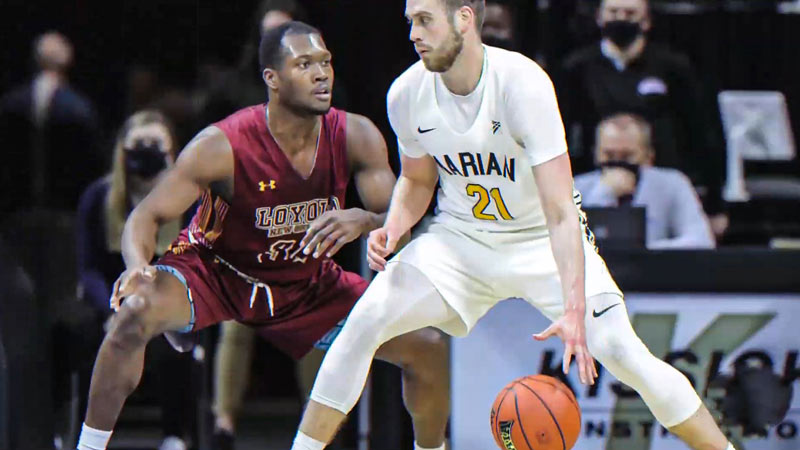
Here’s the schedule you provided with the corresponding release dates:
Conference/CAC/Unaffiliated Group Polls
- Preseason: Monday, October 24
- No. 1: Monday, November 14
- No. 2: Monday, November 28
- No. 3: Monday, December 12
- No. 4: Monday, January 9
- No. 5: Monday, January 23
- No. 6: Monday, February 6
- Final: Monday, February 20
Coaches’ Top 25 Poll
- Preseason: Wednesday, October 26
- No. 1: Wednesday, November 16
- No. 2: Wednesday, November 30
- No. 3: Wednesday, December 14
- No. 4: Wednesday, January 11
- No. 5: Wednesday, January 25
- No. 6: Wednesday, February 8
- Final: Wednesday, February 22
These release dates correspond to the different polls throughout the NAIA basketball season. Keep in mind that these dates may vary slightly from year to year, so it’s a good idea to confirm the specific dates for the current year if you’re looking for the most up-to-date information.
What Is the Difference Between NAIA and NCAA
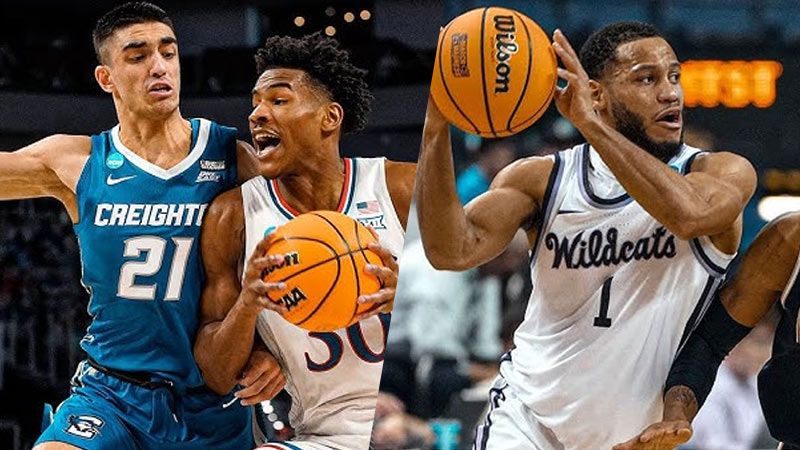
The NAIA (National Association of Intercollegiate Athletics) and the NCAA (National Collegiate Athletic Association) are two distinct organizations that govern intercollegiate athletics in the United States.
While they both oversee college sports, there are several key differences between them:
Scope and Size
NCAA: The NCAA is much larger than the NAIA and is divided into three main divisions (Division I, Division II, and Division III). It encompasses a wide range of colleges and universities, including many large and well-known institutions.
NAIA: The NAIA is smaller and primarily consists of smaller colleges and universities. It is designed to serve institutions that might not have the resources to compete at the NCAA Division I level.
Membership and Eligibility
NCAA: NCAA member schools are often larger institutions with varying degrees of athletic programs. They typically offer a wide range of athletic scholarships and compete at different levels of competition.
NAIA: NAIA member schools are generally smaller institutions that place a strong emphasis on the balance between academics and athletics. NAIA schools also offer athletic scholarships, but the scholarship limits and rules differ from those of the NCAA.
Scholarships
NCAA: NCAA schools offer athletic scholarships across various sports, with Division I schools often offering the most comprehensive packages.
NAIA: NAIA schools also offer athletic scholarships, but the scholarship limits may be different from those in the NCAA. NAIA schools may place a stronger emphasis on scholarship caps and maintaining a balance between athletics and academics.
Governance and Rules
NCAA: The NCAA has a complex governance structure with separate committees and regulations for each division. The rules and regulations can be extensive and can cover various aspects of college athletics, including recruitment, eligibility, and competition.
NAIA: The NAIA has a simpler governance structure compared to the NCAA. The organization provides its own set of rules and regulations for its member schools.
National Championships
NCAA: Each NCAA division hosts its own national championships and tournaments across various sports. These championships often receive significant media coverage and attention.
NAIA: The NAIA also hosts national championships for its member schools, including basketball. While the level of attention may be lower compared to NCAA championships, NAIA championships still provide opportunities for athletes to compete at a high level.
Focus on Student-Athletes
Both the NCAA and NAIA emphasize the importance of student-athlete well-being and the integration of athletics and academics.
However, the NAIA’s smaller size often allows for closer relationships between coaches and athletes, promoting a strong sense of community.
The NCAA and NAIA are two separate organizations that cater to different types of colleges and universities.
The NCAA is larger and more diverse in terms of member schools and competition levels, while the NAIA is designed to provide opportunities for smaller institutions to participate in intercollegiate athletics while maintaining a focus on the overall development of student-athletes.
FAQs
How many NAIA schools are there?
There were around 250 member institutions in the National Association of Intercollegiate Athletics (NAIA). However, please note that the number of NAIA member schools can change over time due to various factors such as schools joining or leaving the organization.
How does NAIA basketball maintain a balance between academics and athletics?
NAIA institutions place a strong emphasis on the holistic development of student-athletes. While basketball remains a significant part of their experience, academic success is equally prioritized.
This approach encourages athletes to excel not only on the court but also in the classroom, fostering well-rounded individuals who can succeed in various aspects of life.
How are NAIA basketball programs structured?
NAIA basketball features both men’s and women’s teams, organized into conferences and regions. These conferences bring together schools from specific geographic areas to compete against one another.
Conferences then feed into the NAIA national basketball tournaments, where top teams vie for the coveted national championship titles.
What are the benefits of playing NAIA basketball for student-athletes?
NAIA basketball offers numerous benefits for student-athletes. It provides an opportunity to compete at a high level of play, showcasing talents that could lead to professional opportunities.
Additionally, the smaller size of NAIA schools often means more personalized attention from coaches and a tight-knit community that enhances the overall college experience.
How can aspiring athletes navigate the recruitment process for NAIA basketball?
To get recruited for NAIA basketball, athletes should focus on honing their skills, maintaining good academic standing, and creating a highlight reel that demonstrates their abilities.
Attending showcases, contacting coaches, and visiting campuses can also help athletes get noticed and find the right fit in an NAIA basketball program.
Wrapping Up
NAIA basketball provides a platform for student-athletes to pursue their basketball dreams while receiving a well-rounded college experience.
By understanding the unique aspects of NAIA basketball, from its emphasis on community to the balance between athletics and academics, aspiring athletes can make informed decisions about their collegiate journey.
Whether you’re a player seeking an alternative to NCAA competition or a fan interested in exploring the diverse world of college hoops, NAIA basketball offers a dynamic and inspiring arena to discover and appreciate.

